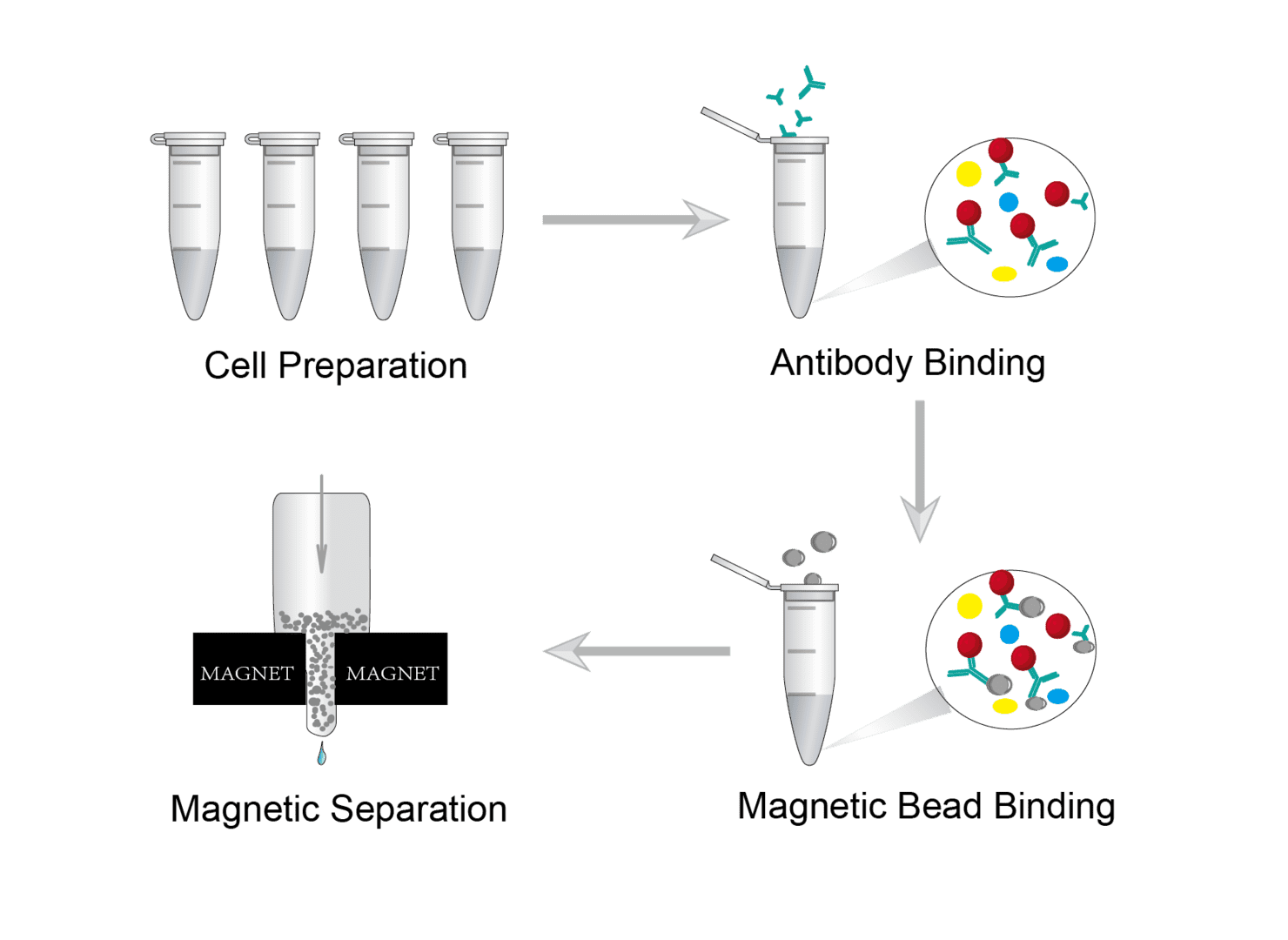Cell Separation Protocol & Troubleshooting
Cell separation techniques are processes that separate and transfer certain cells from a complex mixture of cells. Separation of one or more cell types is essential for cell biology research, cell therapy and other related fields. There are many different methods that can be used for cell separation. The widely used techniques are generally based on adhesion, morphology and antibody binding. The core principle of separation is to exploit one or more properties unique to the cell.
Here, we focus on describing the general protocol for antibody-binding-based immunomagnetic cell separation techniques. Magnetic particles are bound to specific cell surface proteins on target cells by antibodies. The labeled cells are then separated by electromagnetic fields that take away the labeled cells.
Solutions and Reagents
| Stages | Solutions and Reagents |
| Cell Preparation | Phosphate buffer (PBS), dilution buffer |
| Antibody and Bead Binding | Antibody, bead, antibody dilution buffer, washing buffer, blocking buffer |
| Magnetic Separation | Washing buffer, elution buffer |
Cell Separation Procedure

You can prepare cell suspensions using either frozen cells or fresh cell samples. The cells and reagents used should be kept cold using an ice bath or refrigerator. Centrifuge the cell suspension and remove the supernatant. The cells are then gently resuspended in buffer, which can be diluted to the recommended number of cells.
Add the specific antibody to the prepared cell suspension. Gently mix the cell-antibody suspension and incubate on a shaker. After incubation, wash the cells several times with buffer. Then centrifuge the mixture and carefully remove the supernatant. Finally, resuspend the cells in the buffer.
Add magnetic bead solution to the cell suspension. Mix gently and incubate on a shaker. After incubation, wash several times with buffer. Then centrifuge and remove the supernatant completely. Finally, gently resuspend the cell pellet again.
Use buffer to rinse the MS column to equilibrate it. Place the column in a magnetic field. Then load the cell suspension onto the equilibrated MS column and wash it with buffer. Save the effluent as flow-through. After washing, remove the column from the magnetic field and place the column on a collection tube. Finally, add buffer and collect the target cells.
Troubleshooting
We try to make the protocol for cell isolation complete and easy to use. To ensure that all users get the best performance from their experiments, we summarize some common problems below. We list some of the problem sources and solutions. You can review these tips and contact us if you need additional advice.
Low/poor cell purity
- Inadequate antibody causes. You may be using insufficient antibodies. We recommend using the recommended ratio of cell to antibody mixture. And you can choose the appropriate antibody concentration and dosage based on the number of cells.
- Insufficient magnetic bead causes. You need to check the number of magnetic beads used. Use the recommended cell to bead ratio to achieve high cell purity.
- Too short separation process causes. Your separation process is too short resulting in a magnetic cell separation reaction that is not yet complete. Please perform the magnetic separation within the recommended time.
- Careless collection causes. If you are performing a negative selection procedure, carefully collect the cells that do not carry the magnetic marker. Do not touch the wall of the tube where the magnetically labeled cells are located during the negative selection process.
Low cell recovery
- Cell causes. Please use the recommended number of cells.
- Non-specific Binding causes. The antibody/magnetic beads bind excessively or non-specifically to the desired cells. This is generally due to excessive incubation. Please follow the indicated incubation time as well as the temperature for the reaction.
Cell isolation of specific cell populations remains an essential operation in any cell-related experiment. Creative Biolabs offers a wide range of antibody types that can be used to isolate cells as well as customized services. In addition to obtaining products and services, you can also refer to our protocols and troubleshooting guides to optimize your experiments.
For research use only. Not intended for any clinical use.
This site is protected by reCAPTCHA and the Google Privacy Policy and Terms of Service apply.



